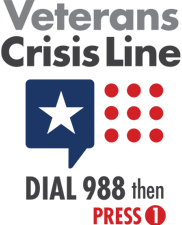What is Content Accessibility?
Information is useless if the people who need it cannot access it or use it. Think of a library: if the books are locked away and can never be read, then all that information is both inaccessible and useless to people who need it.
Now imagine if the books are available, but only displayed on shelves 6 feet tall. Even the picture books are on the top shelf! The books are accessible, but not useful for most people. The presentation is all wrong.
Now imagine all the shelves are filled and everybody can reach some books. But, this time the books on the bottom shelves are text books not picture books. The children can get to information, but they cannot use it. The library's poor organization prevents people from getting the books they need.
Our job is to make sure every user can easily access what they need. We use plain language and organize content to help web users understand information.
Writing for Accessibility
Use Plain Language to Get the Point Across
Write clearly. Write for your audience. Do not use jargon.
- Writing clearly means using short sentences that get to the point.
- Words need to be common and familiar to your audience.
- Active voice is better than passive voice.
- Keep paragraphs short, especially on web pages.
Examples of Plain Language
GOOD EXAMPLE: TriWest proudly serves Veterans.
BAD EXAMPLE: TriWest's contract with the VA has led it to serve Veterans with pride.
GOOD EXAMPLE: Veterans may suffer post-traumatic stress symptoms any time.
BAD EXAMPLE: Post-traumatic stress events can lead to some Veterans experiencing symptoms at some point during their lives, before or after their time in the military.
Tip: If you are having trouble writing clearly, use the Hemingway Editor website to tighten up your prose.
Tailor Text to the Audience's Reading Level
The average adult in the U.S. reads at a seventh or eighth grade level. In fact, more than half of American adults read below a sixth-grade level. This means we need to keep our text simple and easy to understand.
Tip: The Readability Analyzer webpage can help you make sure your text hits the correct reading level.
Choose Meaningful Link Text
The days of "click here" are long gone when it comes to naming links on web pages. The best web links use text that is meaningful or descriptive of the link's destination.
Examples of Link Text:
GOOD EXAMPLE: Read more about how to write accessible titles and captions.
BAD EXAMPLE: Click here to learn how to write accessible headings.
Sources:
Highlights of the 2017 U.S. PIAAC Results Web Report (NCES 2020-777). U.S. Department of Education. Institute of Education Sciences, National Center for Education Statistics. Available at https://nces.ed.gov/surveys/piaac/current_results.asp.
Reading the Numbers: 130 Million American Adults Have Low Literacy Skills, But Funding Differs Drastically by State. Emily Schmidt. Amp Research Lab: March 16, 2022. Accessed on April 8, 2022 at https://www.apmresearchlab.org/10x-adult-literacy.





